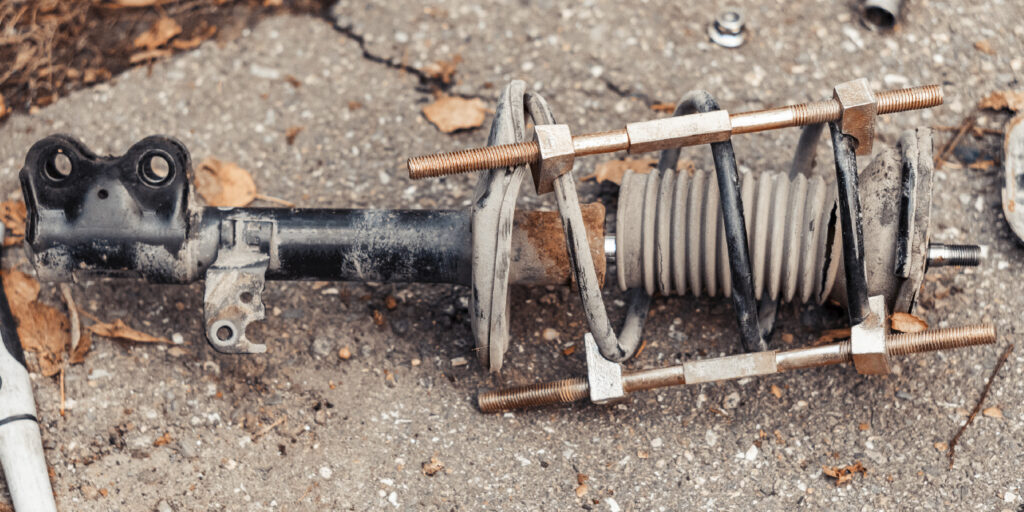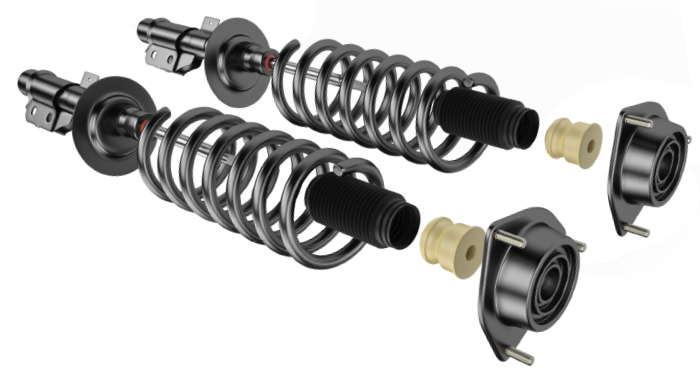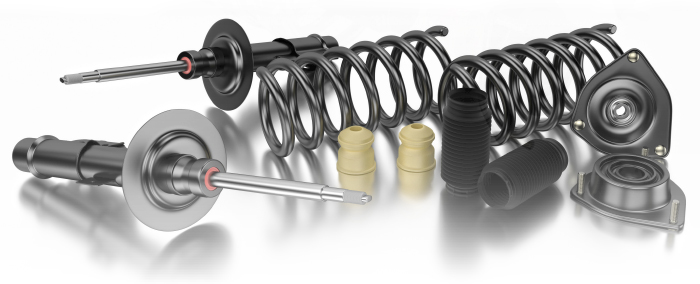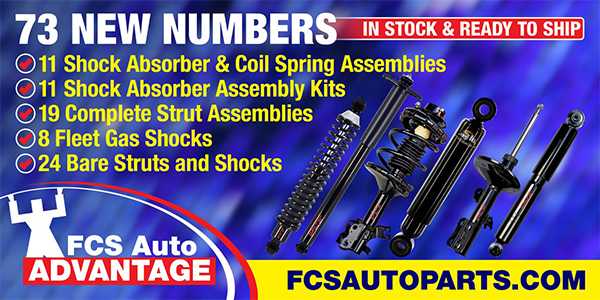Shock and Strut Calculator
Most labor guides give a technician 0.3 hours of labor, or 17 minutes, to compress the spring, disassemble the old strut and assemble the new strut. If a shop has a labor rate of $100 an hour, it is $33 per strut on the repair order. Depending on how efficient a shop can be on that 0.3 hours, it can be a profitable job – or not.
Loaded or complete struts can be twice the price of a strut and upper mount. Before you say to yourself that there is no way you could sell something that expensive or be competitive locally, put yourself in the shoes of your customer. If you were offered an option that would return your vehicle to almost-new condition, wouldn’t you take it, even if the price were higher?
On the business side, it does not take someone with an MBA to realize that if you can sell a more expensive part, chances are under normal parts pricing policies, the job will be more profitable. Also, by not having to do the strut compressor waltz, you will get the vehicle out of the bay faster so you can move on to the next profitable job.
THE DISADVANTAGES
The most significant disadvantages to pre-assembled springs and struts are their availability and coverage. Most of the coverage focuses on problem applications where there is spring breakage or ride height problems. Also, ride control manufacturers have tended to focus on high-volume applications like the Jetta, Camry and Accord. But, new applications are being introduced regularly from an increasing number of suspension component manufacturers.
Some professional parts suppliers have been reluctant to carry some of the lines because they might duplicate their existing inventories of struts, springs and mounts. However, since the introduction of loaded struts almost five years ago, the availability has been increasing since technicians and consumers have realized the value that is built into the part.
LOADED HISTORY
The loaded strut was first conceived as a DIY product that shade-tree mechanics could install at home without the risk of bodily harm from flying springs. It was intended to be a “bolt-on” product that did not require special tools. The original product offering centered around older applications that were prone to spring failure.
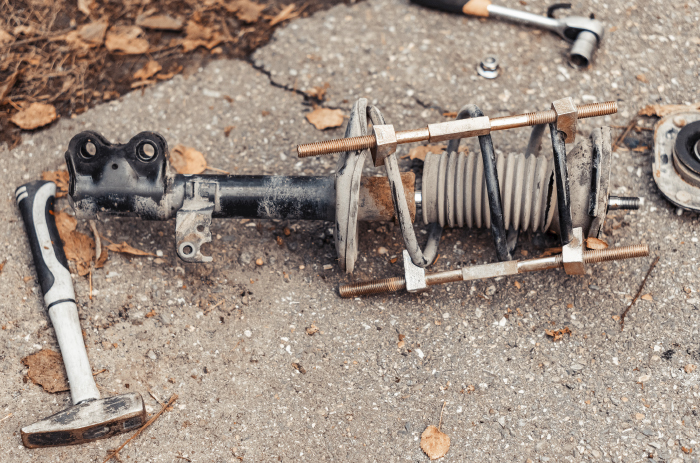
But, many shops and technicians saw the potential of the product as a way to boost productivity and profits.
WHY?
Sometimes it’s like rebuilding an engine with a new crankshaft and reusing the old bearings and valve springs. When a new strut is reassembled with the old and tired spring and strut plate, the results can be less than desirable.
Upper strut mounts and bearings can be hammered to death. The upper strut mount essentially supports the vehicle weight and counters both braking and acceleration torque. Most mounts are sandwiches of rubber, metal and bearings. Over time, the rubber can lose its ability to isolate the suspension from the body. Bearings can also seize and bind, causing the vehicle to have steering problems.
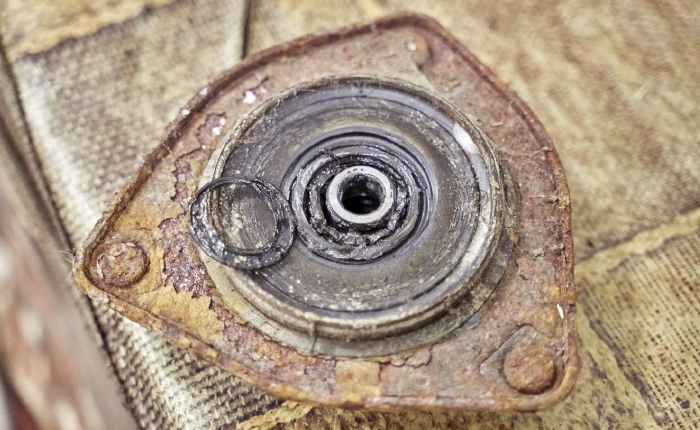
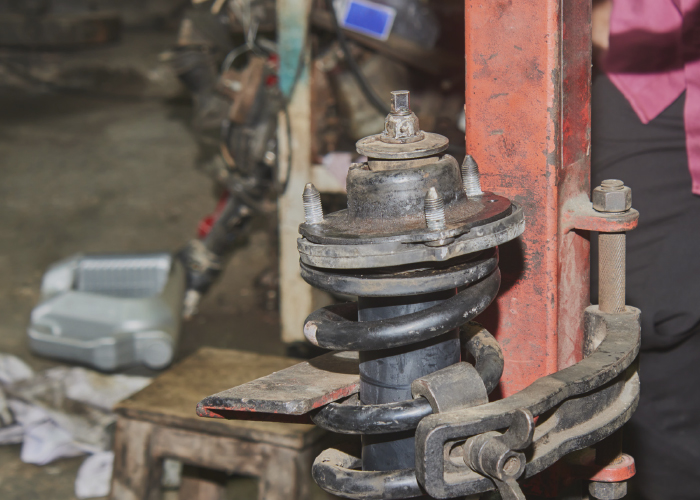
Tire wear, steering and handling can also be affected by ride height and the health of the spring. If the chassis is sagging on one side, or in the front or back, weak springs are the likely cause. Weak springs can affect both camber and caster, which may result in a steering pull, a change in steering effort or return and/or uneven tire wear.
Look up the ride height specifications and measure ride height front and rear, and on both sides of the vehicle. If ride height is less than specifications, the problem is most likely one or more weak springs that should be replaced. Springs can be shimmed, but the best fix is a new spring. Springs should typically be replaced in pairs to maintain the same ride height side-to-side.
Weak springs are also more likely to fail. The springs on many late-model vehicles are thinner to reduce weight and have an outer plastic coating to protect the metal from corrosion. If this outer coating is cracked or damaged, corrosion can form a hot spot that eats into the spring, weakens it and eventually causes it to break.
SELLING STRATEGY
If you have a vehicle in your bays that is a candidate for loaded struts, you may be thinking to yourself: “How can I sell a job that may be twice as expensive?”
You might even think that your customer will walk out the door. When selling ride control components, an effective sales tactic is to start with premium products first rather than with the economy or less-expensive option. It can give you a little wiggle room to provide your customers with options that meet their budget and vehicle life expectancy.
Chances are your customers want the best. Starting the estimate with the least expensive alternative can lower your profit. Plus, quoting the lowest price might get some customers in the door, it may also leave them wanting more and driving away in a vehicle that is not fully repaired.
Take the time to learn and experience the benefits of loaded struts. And, never shy away from writing an estimate for the customer. Even if the customer does not buy today, the inspection form sales approach and pitch will likely stick with the consumer longer than the generic “recommend new shocks and struts” listed on an estimate. This means that he/she might be back, and your efforts will not be in vain.

